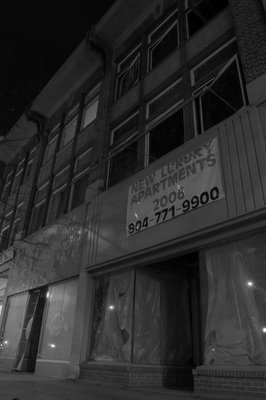Martin Luther King Jr. day Part I

"As Dr. King predicted, the civil rights movement liberated segregationists
themselves. The integrity of law enforcement rose with a stark decline in
racial terror."
"the marchers from Selma turned rulers and subjects into fellow citizens. A
largely invisible people offered leadership in the role of modern founders. For
an incandescent decade, from 1955 to 1965, the heirs of slavery lifted the whole
world toward freedom. Weariness and war intruded. In the White House, President
Lyndon Johnson wrestled the political subtleties of sending soldiers to
guarantee liberty at home. "
According to this quote, one civil rights march eliminated inequality, the whole world was lifted towards freedom, and then, simply, weariness and war intruded. Of course, that war was to "garuantee liberty at home." From that viewpoint, it understandable that no mention is made of the anti-war character of the civil rights movement, nor is the current illegal Iraq war even mentioned.
MLK has been successfully interpreted to match today's requirements through an ignorance that the movement he led was also against the Vietnam war, and an intense focus on the (non-violent) fight for freedom that MLK called for. How convenient! The Iraq war is about freedom too!
" 'I say to you that our goal is freedom,' he said in his last Sunday sermon.
'And I believe we're going to get there because, however much she strays
from it, the goal of America is freedom.'And we must recognize that the
accepted tradeoff between freedom and security is misguided, because our
values are the essence of our strength. If dungeons, brute force and arbitrary rule were the keys to real power, Saudi Arabia would be a model for the future instead of the past."
This author is determined to make absolutely no useful reference to the current situation of the world- For millions upon millions of people, what country best defines dungeons, brute force, and arbitrary rule? And what does that say about the virtue of the sacred free-market economy?
Instead of platitudes, I would like present to how many contradictory, disturbing, and atrocious situations that can been unintentionally seen in a few hours. These will show clearly the contrast between this supposedly slightly skewed society that the New York Times, and other bourgeois press like to present, and the one that actually exists. The first few pictures will be less explicit in this respect than the next two posts.
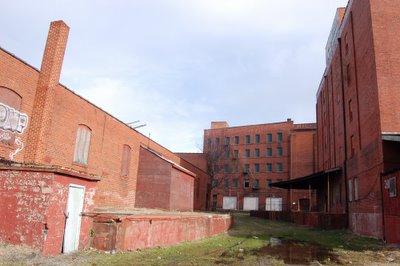
Another of these sites that I caught occasionally glimpses of as a kid. All the while, I was hammered with "the U.S. is the richest nation in the world; the U.S. is the world's only superpower" etc. Now I know the U.S. is more accurately a capitalist economiy in decay, with a impossibly wealthy topmost layer, controlling some 40% of the wealth. This layer enrichs itself primarily though financial dealings, having found industries like this to be unprofitable.
Specifically, these industrys were: International Harvestor Warehouse, direct back with white doors, built 1912; back right, left and close right- Richmond Cold Storage, with the back built in 1912 and the foreground 1917. The cold Storage building to the left was reportedly used for fruit storage in the winter, and ice storage in summer.
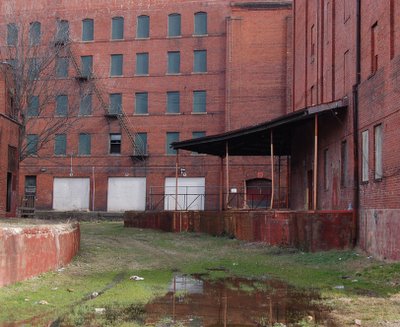
The building barely visible in the left foreground was the Southland Wine Corporation Winery. Personally, I find this to be a rare example of relatively good planning and design. Two railroad tracks went curving towards this view, after splitting off from two that follow the edge of the building in the backround. Every foot of space was maximised by slanting the buildings towards the track and curving the loading docks. Even though three different companies owned these buildings, they are also all in the same very tasteful simple brick style, with such a nice uniform red color - curiously good looking for being nearly 100 years old, despite the tree growing out of the building to the left.
With the filthy mud of a long derelict canal nearby, this remarkable railroad viaduct continues in such a fashion for roughly two miles. Constructing and maintaining the two tracks on such a major work of engineering is an expensive task, one that is presumably warranted by importance of the structure to the railroad traffic. Seeing a train using it north of here is not to common though, as only 5-10 trains use that portion a day, sometimes even less. This is hardly enough to warrant the capacity of two tracks. Decades ago the situation might have been one of pushing capacity, as this city bustled with traffic from local industries, and served as a major stop on the continous flow of coal from West Virginia and Kentucky tipples to tidewater at Newport News, Virginia. The currently increasing demand for coal may slightly increase traffic, as domestic energy consumption, with reduced regulation, is allowed to use more and more appalachian high sulfur coal. On the one hand, this would provide more jobs to the economically devastated coal mining regions of appalachia; but as the Sago Mine incedent testifies, the pursuit of profit will only further erode safety standards.
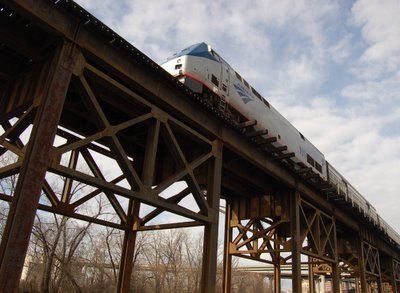
This Amtrak service likely won't exist in a few years, as the ruling stratum of society continues with it's destruction of anything and everything that is not privately owned and operated. See http://www.blogger.com/posts-search.g

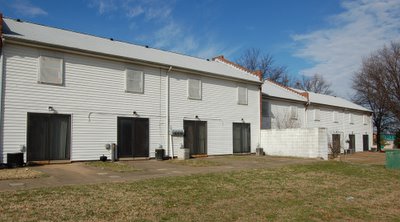


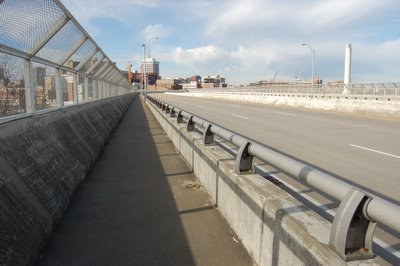
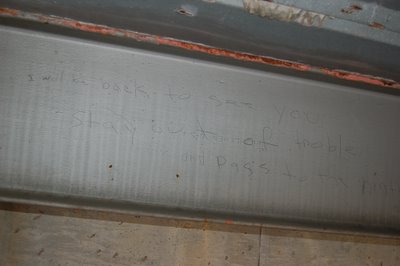

 Temp employees were used in a divide and conquer fashion, as they threaten to take any existing positions if someone is declared unfit. More importantly, they represent a new lowering of labor conditions, and a fantastic workforce for any management that somehow doesn't need skilled labor. What boss could complain when he has an unorganized workforce, making low wage, without benefits, and dismissable at a whim?
Temp employees were used in a divide and conquer fashion, as they threaten to take any existing positions if someone is declared unfit. More importantly, they represent a new lowering of labor conditions, and a fantastic workforce for any management that somehow doesn't need skilled labor. What boss could complain when he has an unorganized workforce, making low wage, without benefits, and dismissable at a whim? 
